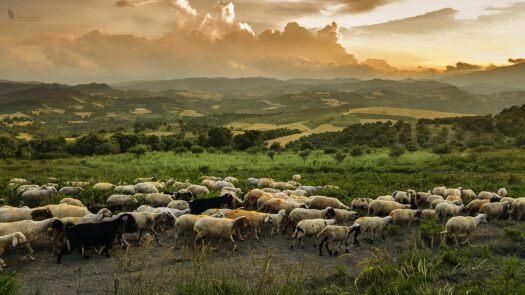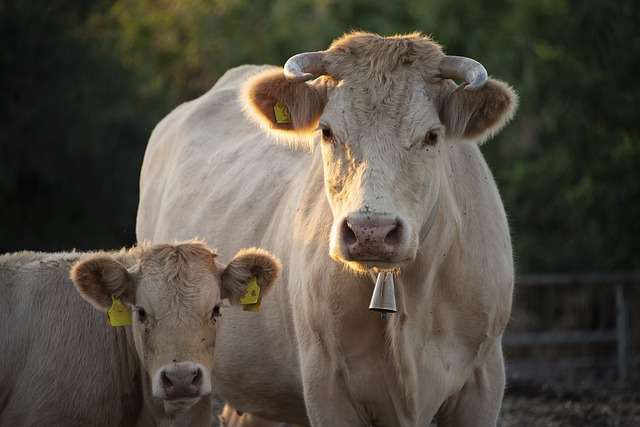what are Challenges in Livestock and Aquaculture in 2024
what are Challenges in Livestock and Aquaculture in 2024 .In 2024, the livestock and aquaculture industries face several challenges, ranging from environmental concerns to technological advancements. Here are some detailed challenges:
- Environmental Sustainability: Both livestock and aquaculture contribute to environmental issues such as greenhouse gas emissions, water pollution, and habitat destruction. Sustainable practices, including improved waste management and reducing reliance on antibiotics and chemicals, are necessary to mitigate these impacts.
- Climate Change: Climate change poses significant risks to livestock and aquaculture operations. Extreme weather events, changing temperatures, and altered precipitation patterns can affect feed availability, water quality, and animal health. Adaptation strategies, such as introducing heat-tolerant breeds and implementing resilient farming techniques, are essential.
- Disease Management: Livestock and aquaculture are susceptible to various diseases that can cause significant economic losses and impact food security. Emerging diseases and antibiotic resistance further complicate disease management. Developing effective vaccines, improving biosecurity measures, and promoting alternative disease management strategies are critical.
- Resource Scarcity: Both industries require substantial resources, including land, water, and feed. As global populations grow and resources become scarcer, competition for these resources intensifies. Sustainable resource management practices, such as efficient feed utilization, water recycling, and land use optimization, are crucial to address this challenge.
- Technology Adoption: Rapid technological advancements offer opportunities for improving productivity and efficiency in livestock and aquaculture operations. However, adopting new technologies can be costly and may require specialized skills. Ensuring access to affordable and user-friendly technologies, as well as providing training and support to farmers, is essential for widespread adoption.
- Market Access and Trade: Livestock and aquaculture products are subject to international trade regulations and market dynamics. Trade barriers, tariffs, and sanitary and phytosanitary measures can hinder market access for producers. Additionally, fluctuating demand and consumer preferences influence market prices and profitability. Strengthening trade agreements, improving market intelligence, and diversifying export markets can help mitigate these challenges.
- Social and Ethical Concerns: There is growing public concern about the welfare of animals raised in intensive farming systems and the environmental impact of livestock and aquaculture operations. Ethical considerations, such as animal welfare standards and sustainable production practices, are increasingly influencing consumer purchasing decisions. Addressing these concerns through transparent supply chains, certification programs, and consumer education is vital for maintaining consumer trust and market access.
- Regulatory Compliance: Livestock and aquaculture operations are subject to a wide range of regulations related to environmental protection, animal welfare, food safety, and labor practices. Compliance with these regulations can be complex and costly, particularly for small-scale producers. Streamlining regulations, providing support for compliance, and promoting industry-wide standards can help ensure sustainable and responsible production practices.
Addressing these challenges requires collaboration among stakeholders, including governments, farmers, researchers, industry associations, and consumers. By implementing innovative solutions and adopting sustainable practices, the livestock and aquaculture industries can navigate these challenges while meeting the growing demand for safe, nutritious, and environmentally friendly food products.
- Labor Shortages: The livestock and aquaculture industries often face challenges related to labor availability and retention. Labor-intensive tasks such as animal husbandry, feeding, and harvesting require skilled workers, but there is a shortage of qualified personnel in many regions. This shortage can lead to increased operational costs and reduced productivity. Implementing mechanization and automation technologies can help alleviate these labor shortages, but initial investment costs and technological integration challenges must be overcome.
- Access to Finance: Access to finance is a significant barrier for small-scale farmers and aquaculture producers looking to invest in infrastructure upgrades, technology adoption, and sustainable practices. Limited access to credit and financial services hinders their ability to expand operations and improve productivity. Providing financial assistance, such as low-interest loans, grants, and subsidies targeted at small-scale producers, can facilitate investment in sustainable practices and promote inclusive growth within the industry.
- Supply Chain Disruptions: The livestock and aquaculture industries are vulnerable to supply chain disruptions caused by factors such as transportation issues, natural disasters, and disease outbreaks. These disruptions can lead to delays in production, increased costs, and market instability. Building resilient supply chains through diversification, redundancy, and contingency planning is essential to mitigate the impact of disruptions and ensure the continuity of operations.
- Consumer Awareness and Education: Educating consumers about the environmental, social, and health implications of their food choices is crucial for driving demand for sustainably produced livestock and aquaculture products. However, consumer awareness and understanding of these issues vary widely, and misinformation can impact purchasing decisions. Implementing consumer education campaigns, labeling schemes, and certification programs can help raise awareness and empower consumers to make informed choices that support sustainable production practices.
- Water Management: Aquaculture operations rely heavily on water resources for fish production, and inefficient water management practices can lead to water scarcity, pollution, and habitat degradation. Sustainable water management strategies, such as water recycling, integrated aquaculture-agriculture systems, and responsible water use practices, are essential to minimize environmental impacts and ensure the long-term viability of aquaculture operations.
- Genetic Diversity and Disease Resistance: Livestock and aquaculture species are vulnerable to disease outbreaks and genetic uniformity, which can compromise production resilience and sustainability. Maintaining genetic diversity within populations and breeding for disease resistance are essential strategies for reducing the risk of disease outbreaks and improving overall production efficiency. Investing in research and breeding programs aimed at enhancing genetic diversity and disease resistance can contribute to the long-term sustainability of livestock and aquaculture systems.
Addressing these challenges requires a holistic approach that integrates scientific research, technological innovation, policy support, and stakeholder collaboration. By proactively addressing these challenges, the livestock and aquaculture industries can enhance their resilience, sustainability, and contribution to global food security and economic development.
- Land Use Competition: Livestock and aquaculture industries often compete with other land uses, such as crop production and urban development, for available land resources. This competition can lead to land degradation, deforestation, and loss of biodiversity. Implementing land-use planning measures, promoting sustainable intensification practices, and incentivizing land stewardship initiatives are essential to balance competing land uses and minimize negative environmental impacts.
- Gender Inequality: Women play significant roles in livestock and aquaculture production, yet they often face gender-based barriers that limit their access to resources, decision-making power, and opportunities for economic empowerment. Addressing gender inequality within the livestock and aquaculture sectors requires promoting women’s participation in leadership roles, providing access to training and extension services, and ensuring equitable access to resources and markets.
- Food Safety and Quality: Ensuring the safety and quality of livestock and aquaculture products is essential to protect consumer health and maintain market confidence. Challenges related to food safety and quality include contamination with pathogens and pollutants, improper handling and storage practices, and inadequate regulatory oversight. Strengthening food safety regulations, implementing quality assurance systems, and investing in infrastructure and training programs are critical to improving food safety standards throughout the production and supply chain.
- Ecosystem Impacts: Livestock and aquaculture production can have significant impacts on surrounding ecosystems, including habitat destruction, water pollution, and biodiversity loss. Sustainable production practices, such as agroecological approaches and integrated farming systems, can help minimize these negative impacts by promoting ecosystem health and resilience. Additionally, implementing ecosystem-based management approaches and adopting nature-based solutions can enhance the sustainability of livestock and aquaculture operations while preserving natural ecosystems.
- Market Volatility: Livestock and aquaculture markets are susceptible to volatility due to factors such as fluctuating input costs, changing consumer preferences, and geopolitical tensions. Market volatility can affect producer incomes, investment decisions, and overall industry stability. Implementing risk management strategies, such as diversifying product offerings, hedging against price fluctuations, and accessing market information and forecasting tools, can help producers navigate market uncertainties and mitigate financial risks.
- Food Loss and Waste: Significant amounts of food produced by the livestock and aquaculture industries are lost or wasted throughout the production, distribution, and consumption stages. Food loss and waste contribute to inefficiencies in resource utilization, environmental degradation, and economic losses. Implementing measures to reduce food loss and waste, such as improving post-harvest handling practices, optimizing supply chain logistics, and raising consumer awareness, can contribute to a more sustainable and resilient food system.
By addressing these challenges through collaborative efforts and innovative solutions, the livestock and aquaculture industries can contribute to the achievement of global sustainability goals, including promoting food security, protecting the environment, and fostering inclusive economic development.

- Social Equity and Livelihoods: Livestock and aquaculture production systems often involve numerous actors along the value chain, including small-scale producers, workers, and marginalized communities. Ensuring social equity and improving livelihoods within these systems require addressing issues such as fair wages, access to education and healthcare, and equitable distribution of benefits. Implementing inclusive policies and programs that prioritize the well-being of all stakeholders, particularly smallholders and vulnerable groups, is crucial for achieving social sustainability within the livestock and aquaculture sectors.
- Traceability and Transparency: Ensuring transparency and traceability throughout the livestock and aquaculture supply chains is essential for enhancing food safety, meeting regulatory requirements, and building consumer trust. However, achieving comprehensive traceability can be challenging due to the complexity of supply chains and the involvement of multiple actors. Implementing traceability systems using technologies such as blockchain, improving data collection and management practices, and enhancing collaboration among stakeholders can help enhance traceability and transparency within the livestock and aquaculture sectors.
- Resource Efficiency and Circular Economy: Livestock and aquaculture production systems often generate significant amounts of waste and by-products, including manure, wastewater, and processing residues. Implementing circular economy principles, such as recycling, reusing, and repurposing these waste streams, can contribute to resource efficiency, reduce environmental impact, and create additional revenue streams. Promoting technologies and practices such as anaerobic digestion, nutrient recovery, and bioconversion can help harness the potential of waste streams within the livestock and aquaculture sectors.
- Education and Extension Services: Access to education and extension services is essential for empowering farmers and aquaculturists with the knowledge and skills needed to adopt sustainable practices, improve productivity, and adapt to changing environmental conditions. However, many small-scale producers, particularly in rural areas, lack access to quality education and extension services. Strengthening extension systems, providing training and capacity-building programs, and leveraging digital technologies for knowledge dissemination can help bridge the knowledge gap and support sustainable development within the livestock and aquaculture sectors.
- Global Health Challenges: Livestock and aquaculture production systems are interconnected with global health challenges, including zoonotic diseases, antimicrobial resistance, and pandemic risks. Addressing these challenges requires a holistic One Health approach that considers the interconnectedness of human, animal, and environmental health. Implementing surveillance and early warning systems, promoting responsible antimicrobial use, and strengthening collaborations between public health, veterinary, and environmental authorities are essential for addressing global health challenges within the context of livestock and aquaculture production systems.
By addressing these challenges in a comprehensive and collaborative manner, the livestock and aquaculture sectors can contribute to building more sustainable, resilient, and inclusive food systems that support the well-being of people, animals, and the environment.
- Innovations in Feed and Nutrition: Livestock and aquaculture industries face challenges related to sourcing sustainable feed ingredients and optimizing nutrition to enhance animal health and productivity. Innovations in feed technology, such as alternative protein sources (e.g., insect meal, algae), precision feeding systems, and nutritional supplements, offer opportunities to improve feed efficiency, reduce environmental impact, and address resource constraints. Research and development initiatives focusing on novel feed ingredients and formulations can contribute to sustainable and resilient livestock and aquaculture production systems.
- Urbanization and Land Use Changes: Rapid urbanization and land use changes pose challenges to livestock and aquaculture production, particularly in peri-urban and densely populated areas. Encroachment of urban areas into agricultural lands can lead to conflicts over land use, loss of farming spaces, and environmental degradation. Implementing urban agriculture initiatives, promoting land-use planning policies that safeguard agricultural lands, and integrating livestock and aquaculture production into urban landscapes through innovative practices such as rooftop farming and aquaponics can help address these challenges while promoting food security and urban resilience.
- Data Management and Decision Support: Livestock and aquaculture production systems generate vast amounts of data related to production, environmental conditions, and animal health. Effectively managing and analyzing these data can provide valuable insights for decision-making, risk assessment, and performance optimization. However, challenges related to data collection, standardization, and analysis hinder the full potential of data-driven decision-making within the livestock and aquaculture sectors. Investing in data management infrastructure, promoting interoperability standards, and developing decision support tools tailored to the needs of producers can enhance data-driven management practices and support sustainable production within the livestock and aquaculture sectors.
- Consumer Preferences and Market Trends: Consumer preferences and market trends play a significant role in shaping the demand for livestock and aquaculture products. Increasing consumer awareness of issues such as animal welfare, environmental sustainability, and ethical production practices is driving demand for products that align with these values. Additionally, changing dietary patterns, including the growing popularity of plant-based diets and alternative protein sources, influence market dynamics and present challenges and opportunities for livestock and aquaculture producers. Responding to evolving consumer preferences and market trends requires agility and innovation in product development, marketing strategies, and supply chain management within the livestock and aquaculture sectors.
- Policy and Governance Challenges: Livestock and aquaculture production is governed by a complex array of policies, regulations, and governance frameworks at local, national, and international levels. Inconsistent or conflicting policies, inadequate enforcement mechanisms, and limited stakeholder engagement can hinder the effective implementation of sustainable practices within the livestock and aquaculture sectors. Strengthening policy coherence, enhancing regulatory enforcement, and fostering multi-stakeholder collaborations are essential for creating enabling environments that support sustainable and responsible livestock and aquaculture production systems.
By addressing these challenges through concerted efforts and innovative approaches, the livestock and aquaculture sectors can contribute to achieving broader sustainability goals, including promoting food security, mitigating climate change, and advancing social and economic development. Collaborative action among stakeholders, including governments, industry players, civil society organizations, and consumers, is essential for overcoming these challenges and building more resilient and sustainable livestock and aquaculture systems.
- Biosecurity and Disease Management: Livestock and aquaculture operations are susceptible to disease outbreaks, which can have devastating effects on production efficiency, animal welfare, and market access. Effective biosecurity measures, including strict hygiene protocols, quarantine procedures, and disease surveillance systems, are essential for preventing and controlling the spread of diseases within and between farms. Additionally, vaccination programs, disease monitoring networks, and early detection methods can help mitigate the impact of disease outbreaks and support the long-term health and resilience of livestock and aquaculture populations.
- Access to Technology and Innovation: Small-scale farmers and aquaculturists, particularly those in remote or resource-constrained areas, often face challenges in accessing and adopting innovative technologies and practices that can enhance productivity and sustainability. Limited access to information, training, and financial resources hinders their ability to adopt technologies such as improved breeds, mechanized equipment, and precision farming tools. Strengthening extension services, promoting technology transfer initiatives, and fostering partnerships between research institutions, private sector actors, and farmer organizations can facilitate technology adoption and innovation diffusion within the livestock and aquaculture sectors.
- Labor Rights and Welfare: Labor rights and welfare issues, including fair wages, safe working conditions, and access to social protection, are critical considerations within the livestock and aquaculture sectors. Farm workers, including migrant laborers and informal workers, often face exploitative working conditions, lack of legal protections, and limited access to social services. Strengthening labor regulations, promoting worker empowerment initiatives, and engaging with industry stakeholders to improve labor standards and practices are essential for ensuring the dignity and well-being of workers employed in livestock and aquaculture operations.
- Conflict and Fragility: Livestock and aquaculture production systems in conflict-affected or fragile contexts face unique challenges related to insecurity, displacement, and disruption of markets and infrastructure. Conflict and instability can disrupt food production, trade, and livelihoods, exacerbating food insecurity and humanitarian crises. Supporting resilience-building initiatives, promoting conflict-sensitive approaches to agricultural development, and investing in peacebuilding efforts are essential for addressing the underlying causes of conflict and fragility and promoting sustainable development within the livestock and aquaculture sectors in conflict-affected regions.
- Inclusive and Equitable Development: Ensuring inclusive and equitable development within the livestock and aquaculture sectors requires addressing structural inequalities and barriers that hinder the participation and empowerment of marginalized groups, including women, youth, indigenous peoples, and ethnic minorities. Enhancing access to resources, training, and market opportunities for marginalized producers, promoting gender-responsive policies and programs, and fostering inclusive governance mechanisms are essential for advancing social equity and inclusive growth within the livestock and aquaculture sectors.
- Cultural and Indigenous Knowledge: Indigenous and traditional knowledge systems play a vital role in sustainable livestock and aquaculture production, offering valuable insights into local ecosystems, traditional breeding practices, and resource management techniques. However, these knowledge systems are often marginalized or undervalued in modern agricultural development processes. Recognizing and integrating traditional knowledge into livestock and aquaculture development initiatives, fostering intercultural dialogue and collaboration, and supporting indigenous-led conservation and sustainable management efforts are essential for preserving biodiversity, promoting cultural diversity, and enhancing the resilience of livestock and aquaculture systems.
By addressing these multifaceted challenges through integrated approaches and stakeholder collaboration, the livestock and aquaculture sectors can contribute to building more resilient, sustainable, and inclusive food systems that promote the well-being of people, animals, and the environment. Efforts to address these challenges must be guided by principles of equity, social justice, and environmental sustainability, ensuring that the benefits of livestock and aquaculture development are shared equitably and contribute to the achievement of broader sustainable development goals.
- Capacity Building and Knowledge Exchange: Strengthening the capacity of stakeholders involved in the livestock and aquaculture sectors, including producers, policymakers, researchers, and extension workers, is essential for promoting sustainable practices and fostering innovation. Capacity-building initiatives can include training programs, workshops, and knowledge exchange platforms that facilitate the sharing of best practices, technical expertise, and scientific advancements. Investing in human capital development and promoting continuous learning and skill enhancement within the livestock and aquaculture sectors can enhance resilience and adaptive capacity to address emerging challenges and opportunities.
- Financial Inclusion and Access to Markets: Limited access to financial services and markets often constrains the growth and development of small-scale producers within the livestock and aquaculture sectors. Lack of access to credit, insurance, and market information hinders investment in productivity-enhancing technologies, infrastructure upgrades, and value-added activities. Promoting financial inclusion initiatives, such as microfinance programs, rural banking services, and producer cooperatives, can improve access to financial resources and market opportunities for small-scale producers, enabling them to increase their productivity, income, and resilience.
- Integrated Pest and Disease Management: Livestock and aquaculture operations face challenges related to pest infestations and disease outbreaks, which can result in significant economic losses and environmental impacts. Integrated pest and disease management (IPDM) approaches, combining biological, cultural, and chemical control methods, can help mitigate pest and disease pressures while minimizing adverse effects on human health and the environment. Implementing IPDM strategies tailored to specific production systems, promoting natural enemy conservation, and reducing reliance on chemical pesticides and antibiotics can contribute to sustainable pest and disease management within the livestock and aquaculture sectors.
- Adaptive Governance and Resilience Building: Building adaptive governance systems that can respond effectively to changing socio-economic, environmental, and climatic conditions is essential for promoting resilience within the livestock and aquaculture sectors. Adaptive governance approaches involve flexible decision-making processes, participatory stakeholder engagement, and learning from feedback and experiences. Strengthening adaptive governance mechanisms, promoting multi-level governance structures, and fostering collaboration and knowledge-sharing among diverse stakeholders can enhance the capacity of livestock and aquaculture systems to adapt to evolving challenges and uncertainties while promoting sustainable development outcomes.
- Promotion of Agroecological Principles: Agroecological approaches emphasize the integration of ecological principles into agricultural production systems, promoting biodiversity, soil health, and ecosystem resilience while reducing reliance on external inputs. Adopting agroecological principles within the livestock and aquaculture sectors can enhance sustainability, resilience, and productivity while minimizing environmental impacts. Promoting agroecological practices such as rotational grazing, diversified cropping systems, and ecological aquaculture techniques can contribute to the regeneration of ecosystems, conservation of natural resources, and promotion of biodiversity within livestock and aquaculture production systems.
- Sustainable Land Management Practices: Livestock and aquaculture production systems often exert pressure on land resources, leading to deforestation, soil degradation, and loss of biodiversity. Implementing sustainable land management practices, such as agroforestry, conservation agriculture, and integrated land-use planning, can help mitigate these negative environmental impacts while enhancing productivity and resilience. Promoting sustainable land management practices within the livestock and aquaculture sectors requires collaboration among stakeholders, including farmers, land managers, policymakers, and conservation organizations, to ensure the sustainable use and management of land resources for present and future generations.
Addressing these diverse and interconnected challenges requires holistic and integrated approaches that consider the social, economic, environmental, and cultural dimensions of livestock and aquaculture production systems. By promoting innovation, collaboration, and adaptive management practices, the livestock and aquaculture sectors can contribute to building more sustainable, resilient, and inclusive food systems that support the well-being of people, animals, and the planet.




